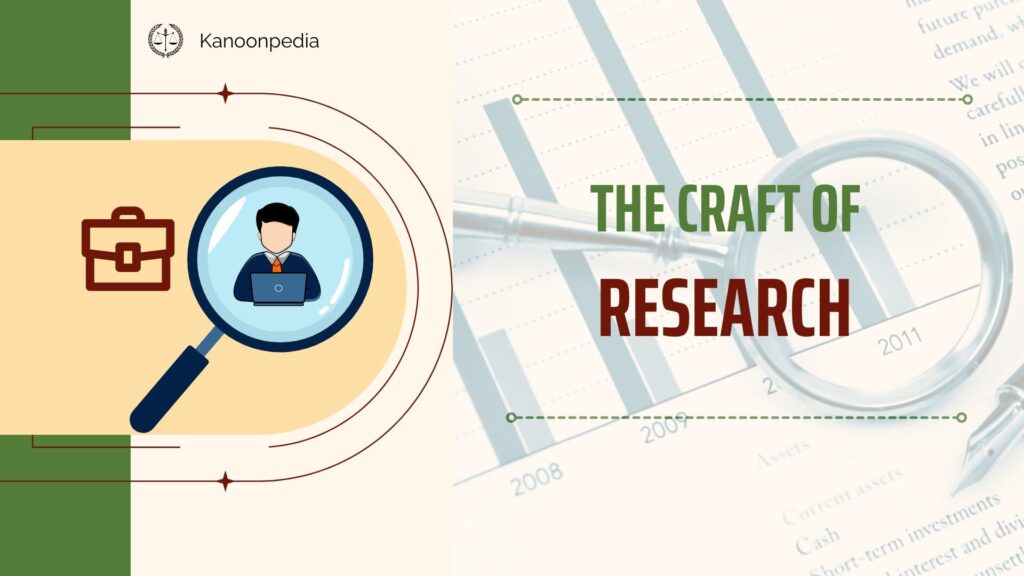Why “The Craft of Research” Matters for Every Scholar
In academia and beyond, The Craft of Research is more than a book—it’s a roadmap for generating meaningful insights, solving real problems, and entering an ongoing intellectual conversation. Whether you’re drafting your first term paper or embarking on a major thesis, mastering The Craft of Research empowers you to:
- Define questions rooted in genuine problems.
- Navigate existing literature with purpose.
- Organize evidence to build convincing arguments.
- Write strategically to become a trustworthy guide for your readers.

Table of Contents
Unpacking the Purpose: Research as Conversation
At its heart, The Craft of Research reframes research from solitary data collection into a public, conversational act. Wayne C. Booth, Gregory G. Colomb, and Joseph M. Williams liken scholarship to a centuries-long dialogue. Before you speak, you must understand the current conversation—what is known, what is debated, and where gaps remain. This perspective transforms research from a passive exercise into an active exchange with peers and predecessors.
Research vs. Information Gathering
- Information Gathering: Collecting facts or data without deeper purpose.
- Research: Systematic inquiry driven by a question that addresses a problem, advancing collective knowledge.
By distinguishing between gathering facts and framing problems, The Craft of Research steers researchers toward genuine inquiry.
The Three-Step Heuristic: Topic, Question, Problem
One of the book’s foundational frameworks is the three-step heuristic:
- Topic: A broad area of interest.
- Question: A precise uncertainty within that topic.
- Problem: The significance of the question—why readers should care.
For instance, instead of “climate change impacts” (topic), ask “How do urban heat islands exacerbate heat-related mortality in Phoenix?” (question), and explain that answering this question informs targeted urban planning policies (problem).
From Private Curiosity to Public Contribution
The Craft of Research highlights both private and public motivations:
- Private: Intellectual satisfaction, sharpening critical thinking, and mastering disciplines transferable across careers.
- Public: Influencing policy, correcting misinformation, and enriching scholarly discourse.
By writing for an audience, you shift from pursuing curiosity in isolation to making a lasting contribution.
Integrating Writing and Thinking: “Thinking in Print”
A core tenet of The Craft of Research is that writing is integral to thinking. Drafts aren’t just reports; they are tools for discovery. As you draft, you:
- Identify gaps and contradictions.
- Reveal patterns and connections.
- Clarify your stance and anticipate reader questions.
Writing early and often transforms messy ideas into coherent arguments.
Distinguishing Practical and Research Problems
The authors differentiate between:
| Practical Problem | Research Problem |
|---|---|
| Originates in real-world needs (e.g., reducing allergies through urban tree planting). | Originates in gaps or inconsistencies in our understanding (e.g., lack of evidence on which tree species most reduce airborne allergens). |
| Solved through action or policy changes. | Solved by generating new, reliable knowledge. |
Successful projects bridge both: they answer a research problem while informing practical solutions.
The Researcher–Reader Pact: Side with Your Audience
To earn trust, adopt a researcher–reader pact:
- Anticipate Knowledge Gaps: Explain jargon and context when readers need it.
- Establish Credibility: Acknowledge limits, cite accurately, and present balanced evidence.
- Show Relevance: Link your question to a problem that matters to stakeholders.
When readers recognize you understand their needs, they’re more receptive to your findings.
Iterative Process: Refining Questions and Methods
Contrary to linear models, The Craft of Research portrays inquiry as iterative:
- Preliminary Exploration: Scan literature to refine your question.
- Focused Investigation: Gather data or sources to build evidence.
- Re-evaluation: Use early findings to revisit and sharpen your question or approach.
This cyclical approach prevents dead-ends and keeps your research aligned with evolving insights.
Applying “The Craft of Research” Across Disciplines
Whether in humanities, STEM, or professional fields, the principles apply universally:
- Formulate compelling questions.
- Engage with key debates.
- Write strategically to persuade and inform.
Graduate theses, grant proposals, policy briefs, and business white papers all benefit from The Craft of Research’s methodologies.
Frequently Asked Questions (FAQ)
Q1: How many drafts should I write?
A1: There’s no set number. Instead, draft until your argument flows logically and anticipates reader doubts. Multiple revisions help integrate new evidence and refine clarity.
Q2: Can I apply “The Craft of Research” to team projects?
A2: Absolutely. Shared drafts and collaborative peer reviews embody the book’s conversational ethos—team members critique, refine, and align their contributions.
Q3: Is “thinking in print” only about writing?
A3: No. It encompasses planning outlines, sketching diagrams, and verbal rehearsals. Any externalization of your ideas qualifies as “print.”
Q4: How do I know when I’ve defined a good research problem?
A4: Your problem should fill a genuine gap in understanding and matter to a community—scholarly or practical. If answering it won’t change perspectives or actions, reconsider its scope.
Q5: What’s the best way to manage sources?
A5: Use reference-management tools (e.g., Zotero, EndNote) from the start. Tag sources by theme, summarize each source’s relevance, and note direct quotations vs. paraphrases.
Conclusion: Embrace Research as a Craft
By internalizing the lessons of The Craft of Research, you transform inquiry into a disciplined, impactful practice. Define significant problems, iterate between reading and writing, and engage your readers as conversation partners. This book doesn’t just guide your first project—it equips you for lifelong scholarly contribution.
[…] Research Methodology MCQ on (Session 1 reading 1/1) W.C. Booth, G.C. Colomb and J.M. Williams, The Craft of Research (University Chicago Press, 2008),… […]
[…] interactions between criminal law, civil regulations, informal norms, and market forces, this research demonstrates that effective policy requires moving beyond simplistic frameworks toward nuanced […]
[…] Research: Conducting research on financial laws and international best […]